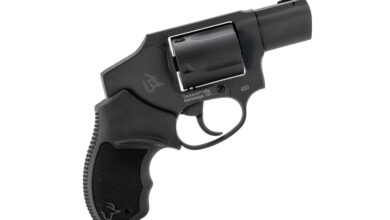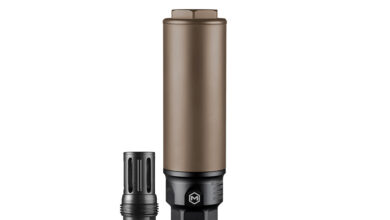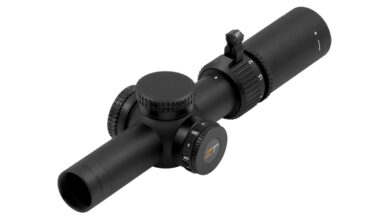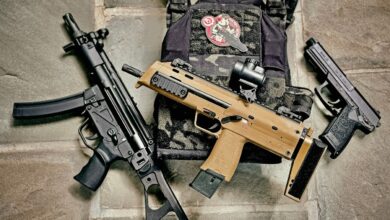Piston AR-15 vs. AK-47: Is There an Advantage?
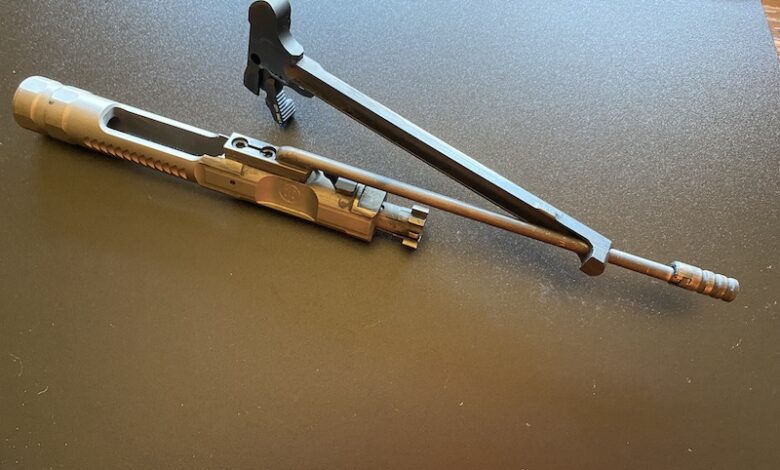
Take a long, sober look at rifle development in the latter half of the 20th Century, and the AR-15 and AK take the top two spots (with the AK winning, if only by volume). The AK is a masterclass in mass production. The AR, from the beginning, seemed more refined. Though the two rifles are often compared, no one would argue this is an apples-to-apples comparison.
But gunsmiths have borrowed design elements from each platform and made changes to both platforms that require a bit of explanation. Take the concept of the AK’s piston and slap in an AR-15. Take the stamped receiver of the AK and mill it from aluminum instead. Some intrepid smiths have designed AR platform guns for the 7.62x39mm cartridge, while the Russians famously developed their own spin on the 5.56 in an effort to keep up ballistically.
Milled receivers and 5.45×39 are a topic for another article (or two). Today, we’re looking at pistons and the efforts several companies have made to take the AR-15 and make it even better. But better at what?
The Basic Difference Between the DI AR-15 and a Piston-Driven AR
Direct impingement guns vent gas from the barrel back into the action. This gas pushes the bolt carrier group to the rear, ejecting the spent cartridge. The gas dumps into the upper receiver. As the BCG travels back, the gas escapes out the side of the receiver.
A piston catches that gas before any of it enters the upper receiver. That gas pushes a piston rearward, which pushes the BCG back. To the uninitiated, the shooting experience would feel exactly the same.
The interior of the DI upper receiver, though, will get sooty. Carbon begins to build up after time. Fail to do regular maintenance and, eventually, the BCG will begin to stick and drag.
The interior of a piston-driven AR, however, stays cleaner. Because the gas that is entering into a DI gun is hot, the upper tends to heat up. A piston gun runs cooler (at the receiver) and should take longer to get fouled. And the piston eliminated the phenomenon known as blow-back, which is when the gas from a DI gun dumps in your face, through the ejection port, as it might if you run a DI gun suppressed. More on that in a bit.
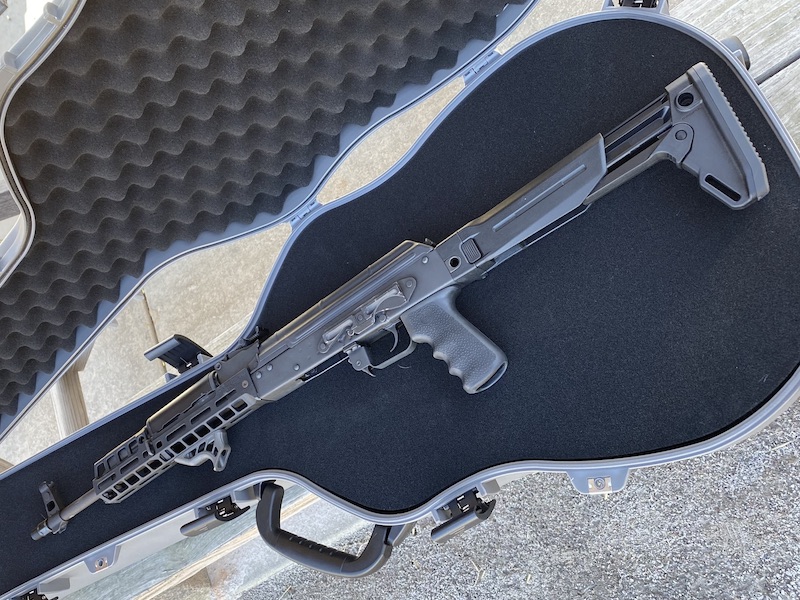
Why the Piston on the AK Works So Well
The AK-47 is hardly delicate. The gas system does a good job self regulating. The gas hits the piston, which is built into the BCG, and it overcomes the inertia and opposing force of the spring. The gun cycles and excess gas vents (but not in your face, as it all happens farther away from you).
The system is really kind of brilliant (in its inception) and crude in its execution (as parts are often roughly filed and peened together). Any armorer with half a brain can tinker with an AR-15, but the AK, while nominally modular, requires something closer to craft specialization for a gunsmith.
What’s wrong with the Direct Impingement system?
Nothing. It works.
I was reading a forum recently where someone described the piston-driven AR as a solution in search of a problem. Unpack the metaphor, and you are left with this: direct impingement ARs actually run amazingly well. So well, in fact, that I’d argue that a piston-driven AR is still something of an outlier. If pistons really worked better, there would be many more of these out in the wild.
DI is ideal for a basic AR-15. Cleaning the BCG can be tedious, but it is easy enough to do.
Imagine a DI AK-47
That would be hellish. And because this is the Internet, someone will comment and point me to just such a beast.
If most of what we’re talking about here is dirty ammo, the 7.62×39 is right up there with the worst offenders. It is wonderfully, beautifully mass-produced. While you can find some bougie hollow points, most of us prefer the SPAM can varieties, none of which are known for their high production standards.
The receivers on most AKs (the stamped kind) are also fairly loose in their tolerances, which would mean more gas is escaping out of these openings. This, though, is the very essence of the AK build—part of why the gun runs so well and is so easy to keep clean, and adding anything like gas pressure here would cause tremendous interference with the shooter.

On the Range with the Piston AR and the AK
Here’s where I’ll betray a personal bias. I don’t own a single expensive AK. I tend to gravitate to bog-standard AKMs and replace parts to make them more functional. And I hardly ever shoot them out past 100 yards. And most of my AKs have simple iron sights.
AR-15s, though, I tend to shoot at greater distances. Over the years, I’ve had the privilege of working with guns from LWRC, POF, Primary Weapons Systems, and Adams Arms—all of which are exceptionally well-built guns. I am comfortable with ARs out to 300 yards or more.
If I were to compare my Romanian WASR to an LWRC, I think I know which one would produce tighter groups.
Off the Range with the Piston AR and the AK
Which one would I choose if I knew I’d be in harsh conditions, out for prolonged periods of time, with limited access to regular cleaning and/or maintenance? Well, this, to me, seems just as obvious. I’m going to roll with a gun that never needs to be cleaned.
Parts for the piston-driven AR can be hard to find. The Adams Arms uses a free-floating piston, while the PWS has a piston rod attached to the BCG. They aren’t interchangeable, which is hardly an issue for most of us, but it could be seen as a negative.

So why go with a piston AR?
If you are going to run a select-fire gun (or if you shoot many rounds fast), the piston option may be ideal. By keeping some of the heat out of that upper receiver, the internal moving parts will wear less and experience less heat-related expansion. But watch out for the handguard overheating.
Or maybe you want to run suppressed. Add a suppressor to an AR-15, and you’ll likely end up with some blow-back. As the suppressor captures some of the expanding gasses, the path of least resistance for their escape becomes the DI gas tube. This can slam the BCG back and can also spit debris back in your face (which is much worse for left-handed shooters).
Going with a piston design almost always means there’s a way to adjust the amount of gas driving the piston. This takes care of the over-gassed issue. The blow-back is cut almost completely by the piston, too.
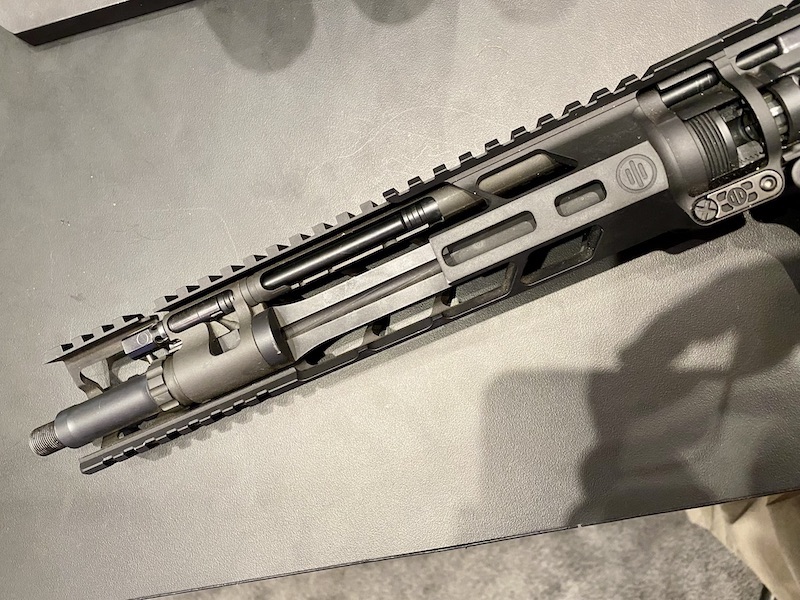
My Personal Preference
My go-to, do-it-all AR is a Frankenstein-built DI gun with a long handguard floating over a 16.5″ barrel. I’ve added a blast shroud to keep the gas off my left hand at the muzzle. It is a solid gun, exceptionally economical to build, and not going to win any awards for style.
My SBR of choice is a PWS. It started life as a pistol, but I liked it so much that I made it an official SBR. This gun is compact and piston-driven, and it runs like a champ. It is an ideal platform for a suppressor, too, as adding an extra bit of length on the end doesn’t make it unwieldy.
I like the piston so much for suppressed fire that I bought an Adams Arms upper, too. The Adams Arms upper had been sitting on a shelf at my FFL for a long time, and I don’t think his customers understood what it was. When the shop discounted it, I snapped it up. This will eventually be my set-up for hogs, something that I can suppress that will provide accuracy out as far as I can shoot.
In the end, I’d say there’s room for at least three guns in the safe: an AK-47, a DI AR-15, and a Piston AR. This would be a step up from the basic AR/AK pairing and will likely be a gateway to other options (like AR platform short-action .30 caliber guns, AK pattern shotguns, etc.).
The piston-driven AR always adds a bit to the bottom line of any project, but that price is well worth it.
The post Piston AR-15 vs. AK-47: Is There an Advantage? appeared first on The Mag Life.
Read the full article here


